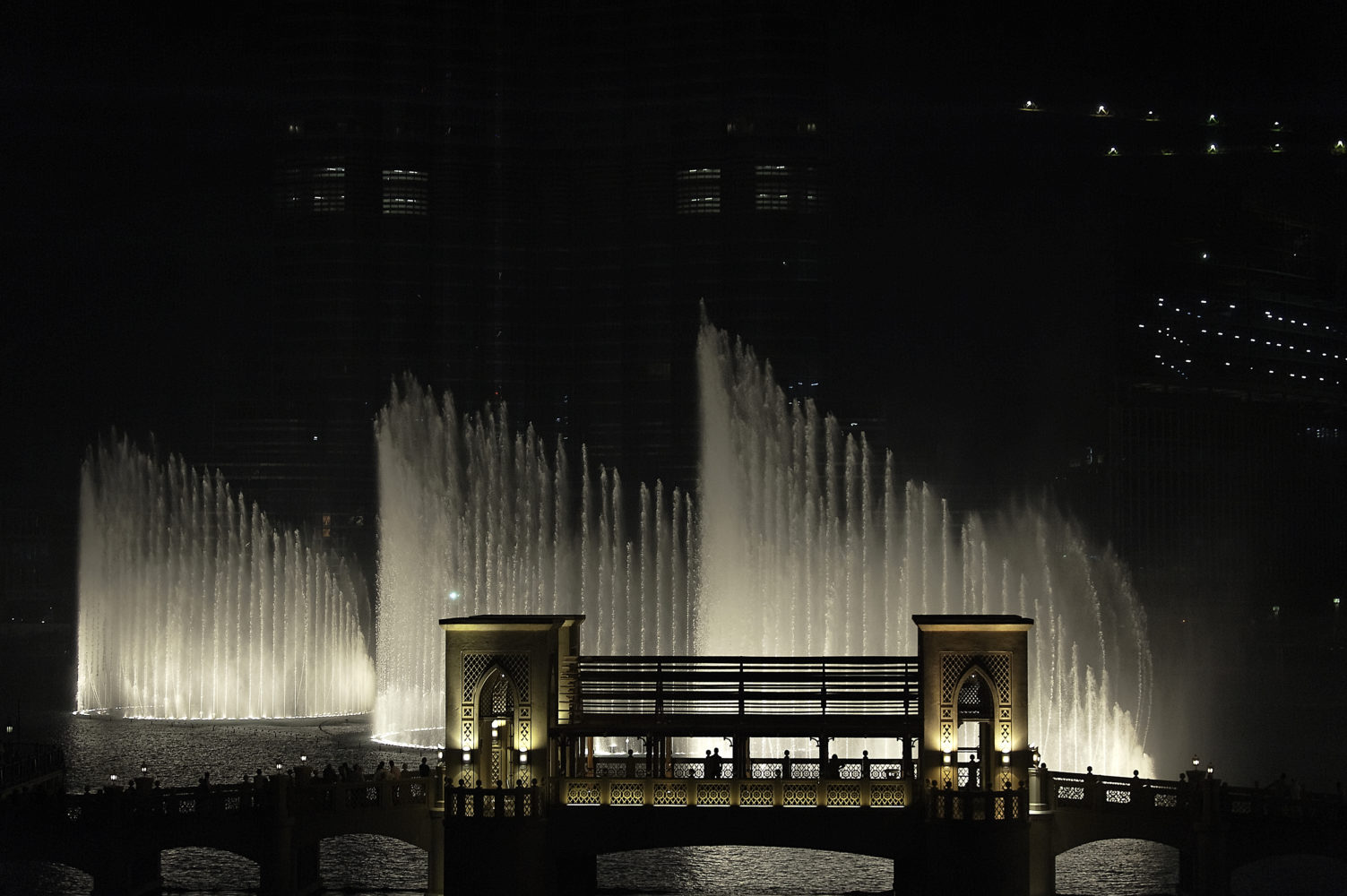
Courtesy WET Design
Those over the top fountains, waterfalls and other grand features found at hotels, malls and parks are quite snazzy – and expensive. But are they making natural attractions seem boring? Here’s our story that appeared first on CNBC.
If you visit Las Vegas and make your way to the Fountains of Bellagio, the Mirage volcano or any of the five curious and creative water features at City Center, you’ll see great examples of natural elements being used to create over-the-top entertainment.
Each experience is part of a portfolio of more than 200 unique installations around the world created by LA-based WET, a design firm that has been perfecting its techniques and pushing the boundaries of art, technology and attraction for more than 35 years.

“We do one-off features with new and unusual stuff that no one’s ever seen or done before,” said Jim Doyle, WET’s director of Design Technology. And like the cauldron it created for the 2002 Winter Olympic Games in Salt Lake City and the showpiece it created for the Winter Olympic Games in Sochi, Russia in 2014, many of WET’s project are big and boutique projects that people talk about, take pictures of and share on Instagram and Facebook, said Doyle.

The 130-foot-tall Rain Vortex is the newest example of WET’s work. Now the world’s tallest indoor waterfall, the Rain Vortex serves as the centerpiece of the Jewel shopping, dining and entertainment complex designed by Moshe Safde’s architecture firm for Singapore’s Changi Airport.
For Jewel, WET figured out how to create and build a circular waterfall that drops seven stories from the roof of the building.
“It’s the first time something like this has appeared in the middle of a building,” said Doyle, “There’s nothing in there that is standard.”
Impressive enough during the day, at night the rain vortex, plus some man-made fog, creates a canvas for a first-of-its kind, 360-degree projected light-and-sound-show.
WET’s water features aren’t just meant to be pretty, said Doyle, “They become works of art, but they are also serious investments put where they’ll capture attention. You’re not going to spend money on a water feature no one will see or that doesn’t have a reason for being there.”

In Dubai, where bigger is always better, WET created the Dubai Fountain, the world’s tallest choreographed fountain.
Located next to the Dubai Mall, one of the world’s largest malls, and Burj Khalifa, the world’s tallest building, the $240 million fountain project has jets that launch water a record-setting 50 stories high, with more than 1,000 individually programmable elements.
“They needed something to give people a reason to come back to the building and to the shops and the restaurants in the mall time and time again,” said Doyle, “That required a very large performance feature we could continually update so that people could walk out of the building, watch a show or two, sit down for dinner, watch another show and then go back into the mall and spend more money.”
Do high-tech attractions with natural elements make “real” attractions seem boring?
While millions of travelers may flock to high-tech attractions such as the dancing light and water fountains in Dubai and Las Vegas, travel experts don’t seem to be worried that much-loved low-tech and natural attractions will seem boring by comparison and become overlooked.
“There is manmade and then there is manmade magnificent,” said Jean Newman Glock, managing director of Signature Travel Network, “The pyramids of Giza are and will always be a destination that Las Vegas could replicate but not replace. It’s the in-situ aspect – the desert that fills all your senses with the heat and arid sands of the nearby Sahara – that the Luxor [hotel] just can’t get quite right.”
Lynn Minnaert, a clinical associate professor with the Tisch Center of Hospitality at New York University who visited both Las Vegas and the Grand Canyon last year, agrees.
“A lot of things we treasure as tourists, like Rome’s Trevi Fountain, are low-tech and man-made, said Minnaert, “And while sometimes people travel purely for entertainment, those technologically-enhanced features that may be spectacular and nice to look can sometimes turn people off because they’re easily duplicated.”
High-tech attractions can add flair and a sense of place to casinos, malls, hotels and spaces that weren’t built to be authentic, said Minnaert. But natural attractions, such as the Grand Canyon or Yellowstone National Park, don’t need anything added. Those places will never be boring, said Minnaert “And are beautiful as is.”
